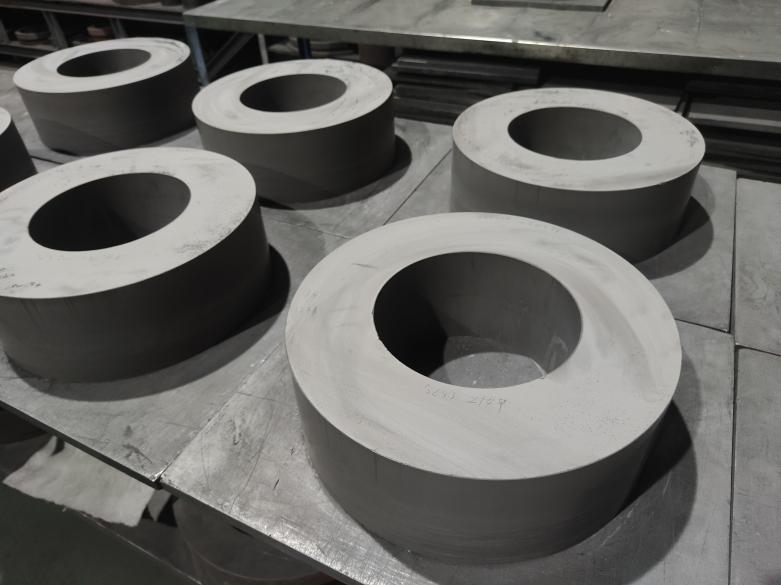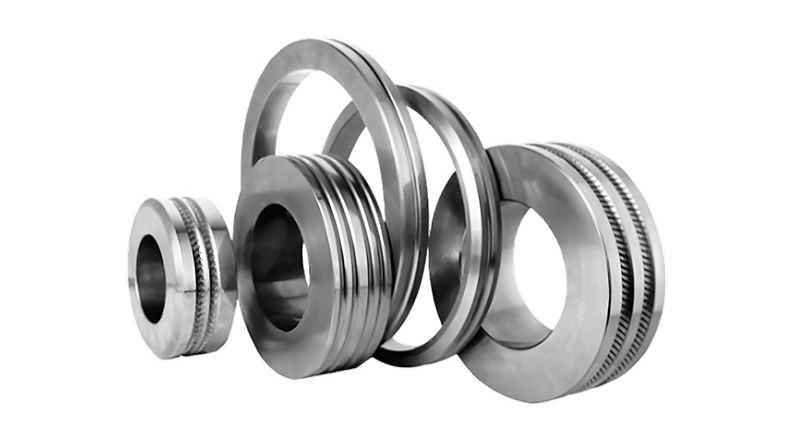What Are Cemented Carbide Rolls?

Cemented Carbide Rolls
I. Development History of Cemented Carbide Rolls
Cemented carbide rolls emerged after the advent of powder metallurgy technology in 1909 and gradually gained traction with the development of the metal processing industry. In 1918, Germany introduced cemented carbide wire drawing dies, spurring global research, but large-scale applications only began post-1960. In 1964, Morgan Company pioneered the high-speed, non-twist wire rod mill, quadrupling finishing speeds. Traditional cast iron and tool steel rolls were phased out due to poor wear resistance and short service life, making modular cemented carbide rolls the industry standard. Today, there are over 200 Morgan-type mills worldwide, consuming hundreds of tons of cemented carbide rolls annually.
II. Composition, Structure, and Properties of Cemented Carbide Rolls
The composition of cemented carbide rolls varies depending on operating conditions, with differences even among rolls in the same finishing mill. High-speed wire rod mills primarily use cobalt-bonded cemented carbide rolls. Some continuous casting mills with poor water quality adopt Co-Ni-Cr-bonded rolls, which are more cost-effective.
Cemented carbide rolls exhibit exceptional hardness, with minimal variation under temperature changes—retaining four times the hardness of high-speed steel at 700°C. Their elastic modulus, compressive strength, bending strength, and thermal conductivity also exceed those of tool steel by over twofold. These properties ensure superior wear resistance and deformation resistance compared to tool steel rolls, maintaining the smoothness of roll grooves and dimensional stability. This is critical for ensuring the surface quality and precision of wire rods. The high thermal conductivity of cemented carbide rolls enables efficient heat dissipation, reducing prolonged high-temperature exposure and minimizing reactions with harmful impurities in cooling water. Consequently, cemented carbide rolls demonstrate better corrosion resistance and thermal fatigue resistance than tool steel rolls.

III. Future Prospects for Cemented Carbide Rolls
Cemented carbide rolls are now used across all fields of metal plastic processing, from non-ferrous metals to steel, and from hot-rolled wire rods and pipes to cold-rolled foils, strips, and rebar. China currently produces dozens of cemented carbide roll varieties in diameters ranging from φ8 to φ300 mm. However, with the rise of high-speed wire rod finishing (up to 130 m/s), efforts are underway to enhance the hardness and strength of these rolls. Key approaches include adding small amounts of TaC, NbC, Ni, Cr, and Mo, as well as advanced manufacturing techniques like hot isostatic pressing, vacuum sintering followed by low-pressure hot isostatic pressing, and heat treatment.

Tianyi High-Tech specializes in producing cemented carbide roll rings, offering a wide range of specifications and grades, including custom non-standard designs. If you have any interest, Welcome to contact us for further details. Website: www.tyhightech.com / www.tygaoke.com
Related product categories
- heat-resistant roller rings for seamless tube mills
- cemented carbide roll ring manufacturers for tube mills
- benefits of using cemented carbide roll rings for bar mills
- top suppliers of tungsten carbide roll rings for high-speed rolling
- supplier of roll rings for reversing mills
- how to select carbide roll rings for high-temperature applications
- carbides rolls for wire milling for metal cutting
- durable carbide roll rings Canada
- precision carbide roll rings Brazil
- china miniature cutting tools
- cemented carbide roll rings
- cemented carbide flow bit
 EN
EN UR
UR ru
ru bn
bn ar
ar ky
ky th
th fil
fil vi
vi ms
ms tr
tr ro
ro pt
pt es
es af
af fa
fa uk
uk nl
nl pl
pl fr
fr de
de

